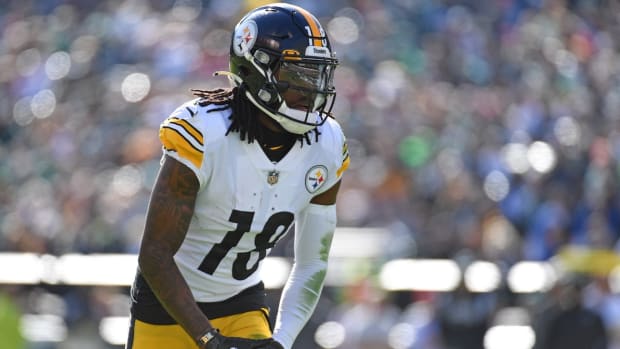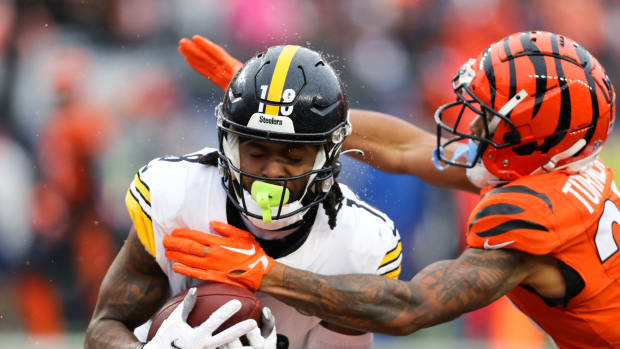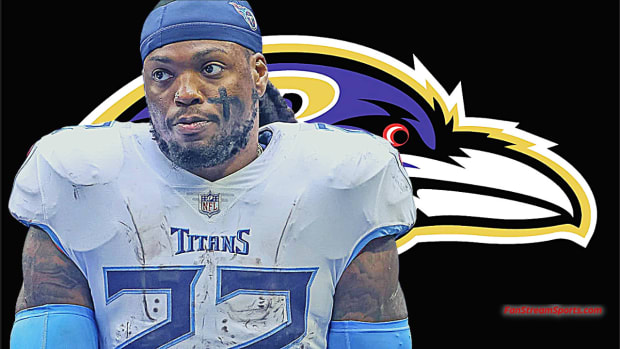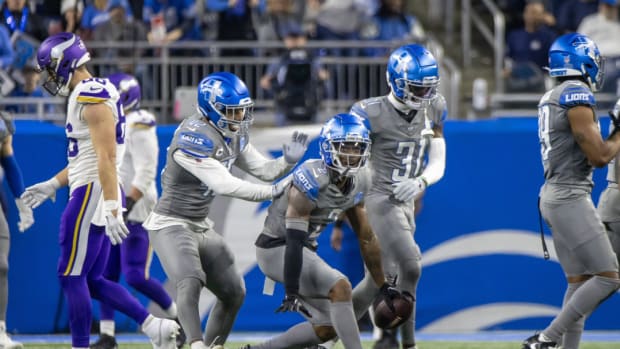A closer look at jury's verdict that found Will Smith's shooter guilty of manslaughter
After deliberating for almost six hours on a Sunday night, a jury of eight women and four men found semipro football player Cardell Hayes criminally responsible for both the death of former New Orleans Saints defensive end Will Smith and the shooting of Smith’s wife, Racquel Smith. The jury, however, declined to find Hayes guilty of second degree murder, which prosecutors sought and would have carried a mandatory life in prison sentence without a chance for parole. Instead, the jury found Hayes guilty of manslaughter, a still serious charge that under Louisiana law carries a sentence of 20 to 40 years in prison. The jury also convicted Hayes for the attempted manslaughter of Racquel Smith, whom Hayes shot once in each leg. The jury found Hayes not guilty of a third charge, aggravated criminal damage to property (Smith’s Mercedes SUV).
Judge Camille Buras of the Orleans Parish Criminal Court will determine and impose Hayes’s sentence at a separate hearing on Feb. 17, 2017. The sentencing hearing will likely include victim impact statements by Racquel Smith and possibly other members of Smith’s family. In calculating a punishment, Judge Buras will also consider Hayes’s own words and sincerity of contrition, as well as pre-sentencing reports.
What's next in the legal process now that Joe McKnight's shooter has been arrested?
An intensive one-week trial
Hayes’s conviction follows a trial that began last Monday and ran through the weekend. On April 9, 2016, Hayes, 29, shot Smith, 34, eight times with a .45 caliber Ruger handgun after the two men had two “road rage” incidents which culminated in Smith, along with at least one passenger, Richard Hernandez, confronting Hayes and his passenger, Kevin O’Neal. At the time, Smith was very drunk—his blood alcohol content was .235, almost three times the legal limit. Hayes described Smith as behaving in a highly aggressive manner. Smith, Hayes would say on the stand, punched Hayes, then threatened to shoot Hayes and then later fired the first shot. Unfortunately for Hayes, no other witness and no evidence corroborated much of Hayes’s retelling, most notably that Smith fired first. In fact, Smith’s gun, a 9 mm caliber handgun, was found wedged in the car and not on Smith’s body.
The trial was heard over the weekend with the blessing of all involved, including the jurors. The jurors were no doubt more willing to spend the weekend in court since they have been sequestered. Indeed, over the past week, jurors have been spending all of their time in court or in a hotel, with constant monitoring by sheriffs deputies and denial of access to television, media and social media. By rendering a verdict Sunday night instead of later in the week, the jurors can now return home to their families, resume their jobs and reengage in normal day-to-day routines.
• SI Longform: Will Smith trial reveals a divided New Orleans
Why a manslaughter conviction and not second degree murder conviction
For jurors to have convicted Hayes of second degree murder, they would have had to have been convinced, beyond a reasonable doubt, that Hayes either had the intent to kill Smith or the intent to cause Smith great bodily harm and that Smith died as a consequence of that bodily harm. The jury was not sufficiently persuaded that Hayes intended to kill or gravely harm Smith. Nonetheless, the jury concluded that Hayes killed Smith in a criminal way. Under Louisiana law, a manslaughter conviction is appropriate when a killing is “committed in sudden passion or heat of blood immediately caused by provocation sufficient to deprive an average person of his self-control and cool reflection.” The jury apparently believed that while Hayes did not aspire to kill Smith, Hayes lost his temper and then wrongly killed Smith.
The jury’s verdict serves as a rejection to Hayes’s defense, which centered on self-defense and lawfully “standing his ground” under Louisiana law. Hayes, who testified in his own defense, maintained that because he thought a drunken and hostile Smith had threatened him with deadly force, Hayes could lawfully use deadly force to prevent being killed or seriously injured. The jury didn’t buy it. The fact that Hayes shot Smith eight times—seven of them entering Smith’s back—undoubtedly undermined Hayes’s contention that he behaved in a defensive manner. The high number of shots suggested that Hayes went well beyond self-defense and into a more offensive posture.
Points to consider as the investigation of Joe McKnight's death progresses
It should be noted that the manslaughter conviction of Hayes could represent a compromise jury verdict. In any murder trial, certain members of the jury might push for a conviction on the most serious charge whereas other jurors do not want to convict the defendant at all. In between, the jurors sometimes find manslaughter to be an acceptable compromise. Such a compromise is slightly easier to obtain in Louisiana, which, along with Oregon, is one of only two states that does not require a unanimous jury for a criminal conviction. Only 10 jurors must agree on a verdict in Louisiana. Published reports indicate that on each of Hayes’s two convictions, one or two jurors objected, meaning a vote of 11–1 or 10–2. In 48 states, those dissenting voices would have prevented a verdict and, without eventually reaching unanimous verdict, risked the judge declaring a mistrial. Not so in Louisiana, where 10 out of 12 jurors is enough to convict.
Hayes’s decision to testify may have backfired
As mentioned above, Hayes took the unusual step of testifying in his own defense. Defense attorneys typically discourage their clients from testifying out of fear that prosecutors will use their courtroom talents and seasoned ability to ask difficult questions to make the defendant “seem guilty” while on the stand. Nonetheless, some defendants are quite persuasive while testifying. Further, sometimes a defense attorney has no practical choice but to put his or her client on the stand, for otherwise a conviction is certain.
As explained on SI.com last Friday, the prosecution—led by Assistant district attorneys Jason Napoli and Laura Rodrigue—rested after presenting a compelling case against Hayes. This was particularly apparent after two witnesses—Racquel Smith and Rebecca Dooley (wife of Richard Hernandez)—told jurors a gripping narrative that painted Hayes as evil. Indeed, they recalled Hayes taunting Will Smith and then manically celebrating after shooting and killing Smith. A depiction of Hayes as gleefully rejoicing his “kill” of Smith undermined a defense based on Hayes fearing Smith.
Hayes would testify on Saturday. While on the stand, Hayes offered a logical, if unpersuasive, retelling of events. Hayes asserted that he accidentally bumped into Smith’s car, which, according to Hayes, led to a shirtless Hernandez frantically pursuing Hayes and O’Neal in their Hummer, while an enraged Smith followed along. Hayes then remembered Smith throwing the proverbial first punch. Indeed, Hayes testified that Smith threw a cup filled with alcohol at Hayes, while also shoving O’Neal, physically accosting Hayes, threatening to shoot Hayes and then firing a gun. Only then, Hayes claims, did he shoot Smith. As Hayes put it, he shot Smith out of fear that failing to shoot Smith would have led to Hayes’s death.
The problem with Hayes’s narration is that no other witness supported it. In fact, every other witness described the events in an appreciably different way. Most critically, no other witness saw Smith with a gun or heard him threatening to shoot Hayes. This absence of corroborating testimony on such crucial points weakened Hayes’s contention that he had to shoot Smith in order to save his own life. Hayes, moreover, somehow forgot to mention that Smith fired a gun when Hayes called 911 back in April—a point that no doubt led jurors to question Hayes’s revised statement of facts eight months later. To top it off, police found no evidence that Smith fired a gun. Also, a crash reconstruction expert testified that, contrary to Hayes’s testimony, it seemed Hayes intentionally crashed his car, a Hummer H2, into Smith’s SUV.
Hayes, therefore, asked jurors to believe a sequence of events that no one else, including his passenger O’Neal and Stephen Cacioppo, a neutral eyewitness who lived near by, offered and that Hayes himself failed to convey right after the shooting in April. The jury’s verdict suggests they found Hayes’s testimony very problematic.
Impact of Smith’s former Saints teammates and coaches attending the trial
While it’s impossible to know if jurors were in any way influenced by the presence of Smith’s former teammates and coaches at his trial, any influence they might have had would have worked against Hayes. Saints head coach Sean Payton, along with such players as Deuce McAllister, Drew Brees, Steve Gleason (who is suffering from ALS), Roman Harper and Jahri Evans all attended the trial. This show of support for Smith, who was a popular and likeable player and who played an instrumental role in the Saints winning Super Bowl XLIV in 2010, illuminated the loss of life caused by Hayes’s shooting. Along those lines, the presence of the coaches and players in court reminded jurors of Smith’s past heroics and why Hayes’s killing of him is so hurtful.
Hayes can appeal
Although the vast majority of appeals fail, Hayes can appeal the conviction. His appeal cannot merely assert that the jury “got it wrong.” Instead, Hayes must identify a mistake made by Judge Buras while presiding over the trial. The fact that Judge Buras sequestered the jury over the objections of Hayes’s attorney, John Fuller, is likely to be highlighted on appeal. Fuller insisted that a sequestered jury would exclude a wide-range of prospective jurors who, due to child care and other obligations, could not serve on a sequestered jury. It’s not immediately clear why prospective jurors who could have served and those who could not have served were different in terms of fairness and impartiality, but expect Fuller to develop an argument from Judge Buras’s decision. The judge’s jury instructions and rulings on admissibility of evidence are also likely grounds for appeal.
Michael McCann is SI's legal analyst. He is also an attorney and a tenured law professor at the University of New Hampshire School of Law.




































